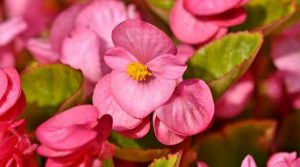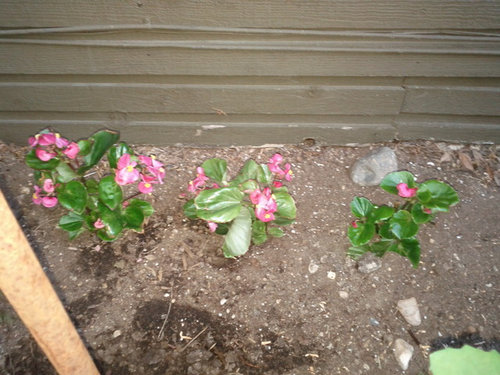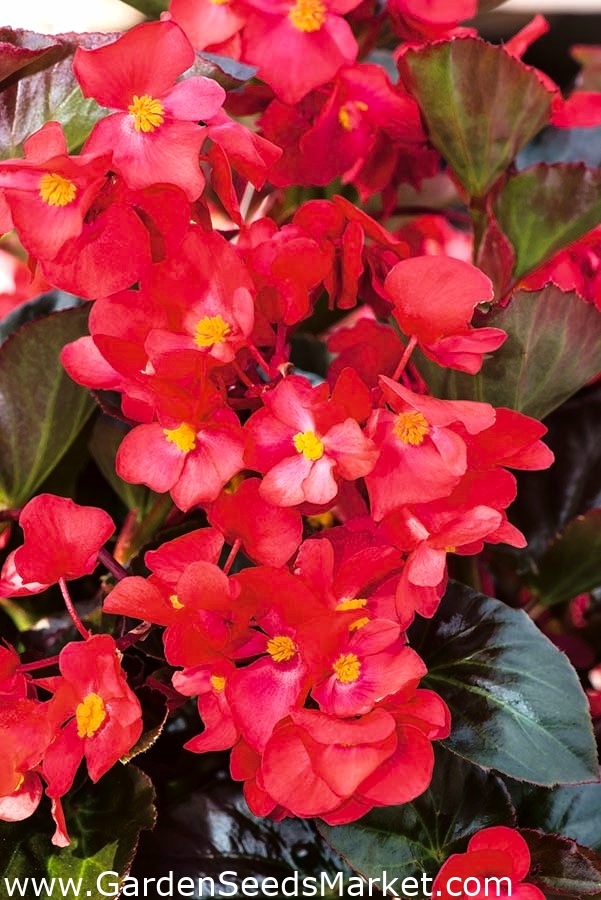

When trying to start begonias from seed for the first time, I recommend beginning with wax begonias, Dragon wing begonias, Angel wing begonias, cascading begonias or tuberous begonias.Wax begonias are kind flowering plants that don’t need much sunlight and can, in fact, get sunburned if they’re overexposed to it. Some types, like rex begonias, are easier to grow from root or leaf cuttings, but the experience of starting other types from seed is lots of fun. There are many types of begonias you can start from seed. Which Begonias Should You Start From Seed?

This process of hardening off means a reduced chance of transplant shock and sunburn once your begonias are planted outdoors permanently.
WAX BEGONIA SEEDS HARVESTING FULL
Gradually increase the amount of time they spend outdoors over the course of two to three weeks until they are outdoors full time. Once the danger of frost has passed, it’s time to begin to move your begonias outdoors for a few hours per day. Keep the pots or nursery packs well watered and continue to keep them under the grow lights for 14-18 hours per day. Once separated, replant the begonia seedlings into nursery 4 packs or small plastic pots of new sterile potting soil. Use a spoon or spatula to lift a section of young plants up out of the tray and then use your fingers to gently tease them apart. When to Transplant Begonias Started From SeedĪs soon as your begonia seedlings develop their first true leaves, it’s time to transplant them. Remove the plastic or humidity dome as soon as the seeds start to germinate. Make sure the seed flats don’t dry out water them with a mister or spray bottle whenever necessary. Some varieties of begonias can take weeks, if not months, to germinate, so don’t give up on them even if it seems to be taking forever. Put heat mats under the trays to improve and speed germination. When I start begonias from seed, I water the newly planted seeds in with a mister, rather than a hose nozzle, to make sure they stay in place and don’t float away.Ĭover the seeding tray with a sheet of clear plastic or a humidity dome, and place the tray under grow lights that run for about 14-18 hours per day and stand about 2-3″ above the tops of the trays.
/growing-wax-begonias-5079936-05-c6f81ae5e99b4eb09ff261bf848c21a4.jpg)
Begonias always need to be transplanted when they’re young, so if the seedlings end up too close, it’s no big deal you’ll be separating them later anyway. Try to distribute them evenly across the soil, but it’s okay to have them spaced fairly closely. Begonias need light to germinate, so simply broadcast the seeds across the surface of the potting mix and press them against the surface of the soil with your fingertips or a flat piece of cardboard. Once your seed trays are filled with sterile potting mix, it’s time to plant your begonia seeds. You’ll also need new sterile potting soil that’s formulated specifically for seed starting.

The plants are prone to developing fungal diseases, including damping off and botrytis, so new or disinfected seed trays are a must. Use new seedling trays or flats to plant begonias from seed. However, once you get the hang of starting begonias from seed, you’ll discover your efforts are well worth it. Add that to the fact that begonias take a very long time to germinate, and that’s probably why most folks shy away from starting them from seed. Handling these miniscule seeds can be difficult, though you can purchase pelleted seeds to make the job a bit easier. In fact, each seed isn’t much bigger than a speck of dust. Most commercial growers focus on growing just three or four popular types of begonias, but there are dozens of selections you can choose from when growing begonias from seed.īegonia seeds are extremely tiny. While starting marigolds, cosmos and salvias from seed is as simple as can be, when you start begonias from seed, it requires a bit more time and effort.Īs with many other plants, starting begonias from seed, rather than buying transplants from a grower, means you’ll have a better varietal selection to choose from and you’ll get a lot more bang for your buck. If you want to grow some of your own, you might be surprised to learn that, unlike most other annual flowers, mid to late January is the perfect time to start begonias from seed.Īnnual flowers are definitely not the most expensive plants at your local greenhouse, but if you grow (or sell) a lot of them, starting your own from seed can save you a ton of money. Begonias are beautiful annuals that are both shade loving and deer resistant, and they make a beautiful addition to almost any landscape. While prime seed-starting time is still weeks away for most parts of North America, there’s one plant that requires a bit more time to grow.


 0 kommentar(er)
0 kommentar(er)
